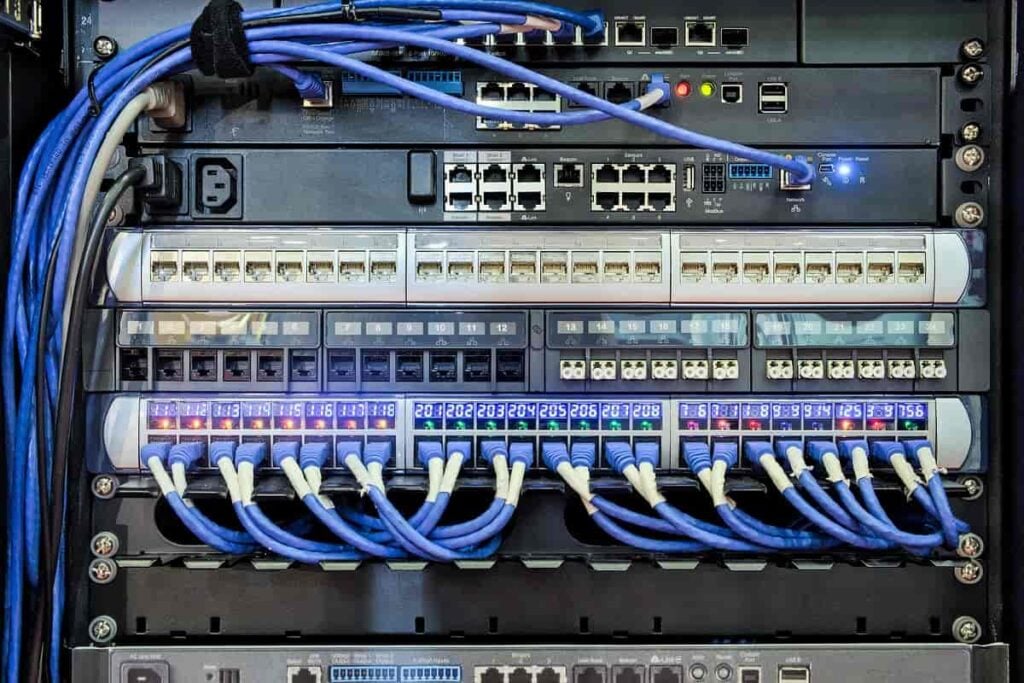9 Technology Trends You Should Know For 2021
Table of contents

We often tell our MBAs not to try and predict the future. That’s because when you’re right, nobody will notice, but when you’re wrong, critics will crawl out of the woodwork to point out what a moron you are. The best thing to do is take someone else’s predictions and carefully critique them. Then, you’ll appear to be a thought leader without having to make any commitments. And more importantly, you won’t have to do any of the heavy lifting.
Gartner (IT), an $11 billion global research and advisory firm, has 16,700 employees tasked with helping the world’s biggest organizations skate to where the puck will be. Just this past week, they released a report titled “Top Strategic Technology Trends for 2021,” and it’s a painful read. We spend most of our waking hours researching disruptive technologies, yet parts of this report are nearly incomprehensible. So, we decided to paraphrase this buzzword-laden babble into something so simple even an MBA can understand it.
9 Technology Trends for 2021
The intro starts with the usual “pivot and adapt because of COVID” mantra, and maybe the best thing on the page is a new buzzword bingo entry – “organizational plasticity.” The next page vomits out a cacophony of buzzwords shaped into a cool-looking diagram, which is what happens when you give your research analysts too much plasticity.

There we have it, nine technological trends to watch for 2021. Let’s put on our waders and step right into the muck.
The Internet of Behaviors
We’ve seen companies invent the Internet of Just About Everything, but this one we hadn’t come across yet. What we’ve been calling “data exhaust,” Gartner calls “data dust,” and it’s all the information you provide companies when you use “free apps,” or try to make your mundane life sound exciting on social media. While some of your data dust can be put to sinister uses, it can also be exchanged for something of value. For example, Root Insurance takes your driving behavior data and gives you cheaper car insurance in exchange, if you’re a good driver that is.
Total Experience
Multiexperience was a term coined by Gartner in 2019 to describe how companies should seamlessly offer access to their products and services on multiple channels. (Yes, that’s also referred to as omnichannel, but as you know, technology terms need to be renamed regularly so consultants have something new to sell the C-suite.) Here’s an equation you can draw on a whiteboard to impress your cow-orkers:
- Multiexperience (MX) + customer experience (CX) + employee experience (EX) + user experience (UX) = total experience (TX)
Total experience is about making sure everyone can easily drink your brand’s Kool-Aid, and that the taste is consistent.
Privacy-Enhancing Computation
You’ll need to know three terms to understand this next trend. The first one is federated learning, something we wrote about earlier this year in a piece on Federated Learning Explained Simply. Basically, it’s about using sensitive data at-the-edge so you don’t need to store it in the cloud. That’s similar to the second term, confidential computing, which describes an environment where sensitive data can be processed or analyzed. The third term is basically a collection of even more terms, one of which is pretty interesting – homomorphic encryption.

Basically, privacy-enhancing computation is all about letting organizations safely share data in untrusted environments.
Distributed Cloud
In a previous article titled, IBM and Red Hat – WTF is a Hybrid Cloud?, we questioned how IBM could claim to be a #1 hybrid cloud provider when no two people can define hybrid cloud the same way. That’s how we feel about distributed cloud, which is when people can access public or private clouds from anywhere, which is what we thought a hybrid cloud was. Distributed cloud is when you take every single cloud-related buzzword you can think of and then make a slide with it – like this one:

Sprinkle with some COVID references and you’ll be cooking with gas.
Anywhere Operations
Speaking of “the Rona,” we all know where this one is going, and it’s old news. When your team in Mumbai has to work from home today because of flooding, that’s a good example of why companies do business continuity planning (BCP). Most large firms have a team responsible for making all the managers fill out some acronym laden BCP plan, and then do dry runs in various regions to make sure they can still operate during times of crisis. If your BCP plan can also “offer unique value-add experiences,” then you can refer to it as “anywhere operations,” and ask your boss for a raise.
Cybersecurity Mesh
Bring your own device or BYOD was a trend in corporations where employees provided their own phones and computers under the guise of convenience, when it was really just another cost-cutting exercise. Cybersecurity mesh is about being able to protect all those devices, and it’s even more important now because of you-know-what. In their words, “the cybersecurity mesh enables any person or thing to securely access and use any digital asset, no matter where either is located, while providing the necessary level of security.”
Intelligence Composable Business
Your business was brittle when COVID hit, and you suffered. That wouldn’t have happened if you were at the pinnacle of organizational plasticity. This is about allowing the rank and file more autonomy to make decisions and giving them the data they need to do it properly (the appropriate buzzword to use here is “augmented decision making”). Applications need to be personalized, and role-specific, and templates used when possible for consistency.
Our article on Unqork – A No-Code Software Platform for Enterprises pretty much describes the technology platform you’d need to engineer plasticity into enterprise applications. It also ties into Gartner’s tech trend from last year, “democratization of expertise.” That’s when you prefix all your engineering titles with the word citizen – citizen developer, citizen data scientists, etc. – and save money by not having to hire real ones.
AI Engineering
In order to achieve democratization of expertise, you’ll need to develop some artificial intelligence algorithms that can interpret all your data dust and use it to augment your citizen decision-makers. In our piece on Algorithmia – The World’s Biggest Algorithm Marketplace, we introduced you to the concept of DevOps –
DevOps is the combination of cultural philosophies, practices, and tools that increases an organization’s ability to deliver applications and services at high velocity – Amazon
Then you have DataOps and ModelOps which pretty much use the same definition above while referring to big data and machine learning algorithms respectively. In other words, don’t employ any citizens in your AI engineering team.
Hyperscience
While your AI engineering team focuses on using AI to amplify your core competencies, hyperautomation is where you let an experienced vendor help you create digital citizens. It’s not just robotic process automation (RPA), it goes beyond that to allow your human citizens to interact with your digital citizens. It even extends outside your organization where a chatbot might help a customer change their billing address by talking to a digital citizen in your sales team and one in your accounting department. We dig into this more in our piece on UiPath – From RPA to Hyperautomation.
Everything that can be automated will be automated. To cap off their presentation, Gartner graces us with one more entry for our corporate vocabulary – “organizational debt.” It’s what will happen if you start hiring consultants who use these buzzwords without providing actionable plans that ultimately impact the bottom line. At the end of the day, it all comes down to execution.
Conclusion
It’s hard to tell what’s changing quicker – technology, or the names and phrases used to describe it. We don’t know how long these nine trends will stick around, but we do know that many involve best practices that all firms are striving towards. Make the customer experience pleasant, keep the hackers out, keep your BCP plan up to date, cut costs, make better decisions, these are all things that organizations definitely need to keep doing in 2021, no matter what new buzzwords everyone starts using.
Sign up to our newsletter to get more of our great research delivered straight to your inbox!
Nanalyze Weekly includes useful insights written by our team of underpaid MBAs, research on new disruptive technology stocks flying under the radar, and summaries of our recent research. Always 100% free.














